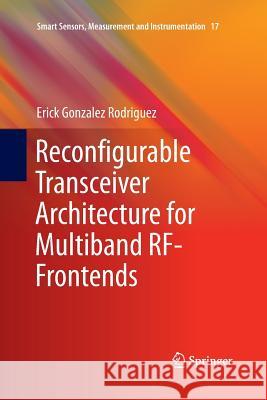Reconfigurable Transceiver Architecture for Multiband Rf-Frontends » książka
topmenu
Reconfigurable Transceiver Architecture for Multiband Rf-Frontends
ISBN-13: 9783319370972 / Angielski / Miękka / 2016 / 114 str.
Kategorie:
Kategorie BISAC:
Wydawca:
Springer
Seria wydawnicza:
Język:
Angielski
ISBN-13:
9783319370972
Rok wydania:
2016
Wydanie:
Softcover Repri
Ilość stron:
114
Waga:
0.19 kg
Wymiary:
23.39 x 15.6 x 0.71
Oprawa:
Miękka
Wolumenów:
01
Dodatkowe informacje:
Wydanie ilustrowane











